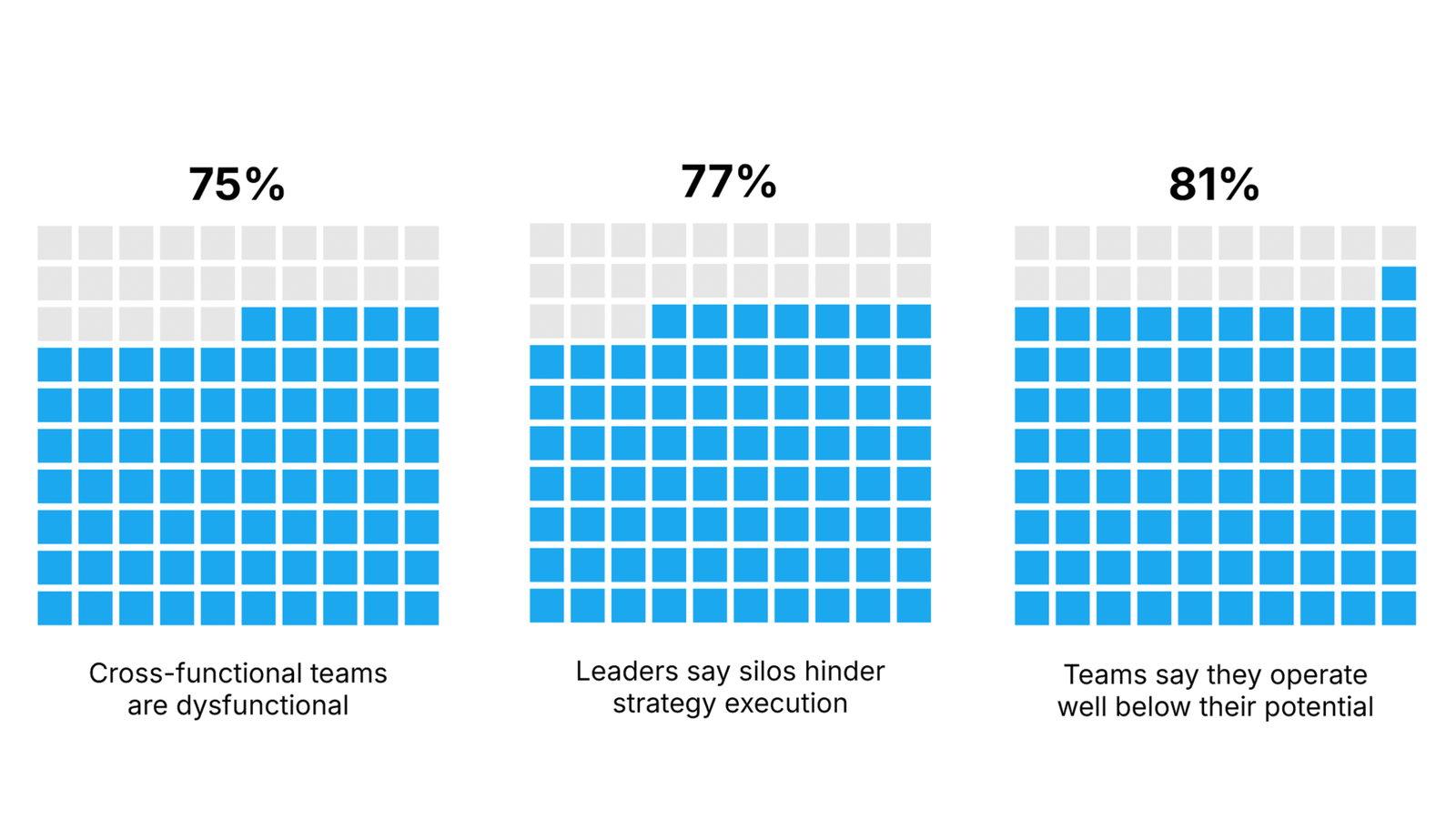Teams must break down internal silos to unlock strategy
You've been there: a promising product launch that gets bogged down between marketing and engineering, or a digital transformation stalled by departments protecting their turf. What feels like isolated frustration is actually part of a broader pattern affecting most organizations. Consider research showing that 75% of cross-functional teams are dysfunctional, while 77% of leaders identify silos as barriers to strategy execution. Perhaps most telling, 81% of employees surveyed believe their teams operate well below potential.

Sources: 75%: Behnam Tabrizi, “75% of cross-functional teams are dysfunctional,” Harvard Business Review, June 23, 2015. Dysfunctional is defined as failing on at least 3 of 5 criteria: 1) meeting a planned budget 2) staying on schedule 3) adhering to specifications 4) meeting customer expectations, and/or 5) maintaining alignment with the company’s corporate goals. 77%: AchieveIt, 2025 State of Strategy Execution report. 81%: Keith Ferrazzi, "A New Social Contract for Teams" in Harvard Business Review, September-October 2022.
The disconnect isn't about talent or effort – it's about structure. When departments work in isolation, even brilliant strategies struggle to gain traction. Traditional organizational hierarchies create invisible walls that impede information flow and fragment decision-making processes. Teams become protective of their resources and priorities, leading to duplicated efforts and missed opportunities for innovation.
This structural challenge manifests in various ways across organizations. Product development cycles extend unnecessarily when teams can't coordinate effectively. Customer experience suffers when marketing promises don't align with operational capabilities. Innovation stagnates when diverse perspectives can't be synthesized into coherent solutions. The result is organizational underperformance that compounds over time.
The solution involves creating systematic collaboration that builds psychological safety and shared accountability across traditional boundaries, transforming organizational capacity for execution. Research demonstrates that organizations with high psychological safety are 89% more likely to achieve superior performance, while teams with cognitive diversity complete strategic tasks nearly twice as fast as homogeneous teams. Success requires deliberate design of collaborative processes that enable diverse stakeholders to contribute their expertise while working toward unified outcomes.
About the author
Mark McCarvill is the Founder and Lead Facilitator at Mind Meeting Group, a strategy consulting firm based outside Vancouver, Canada. Mind Meeting Group helps business, government, and non-profit leaders align departments and mobilize teams through collaborative workshops that deliver execution-ready strategies.
